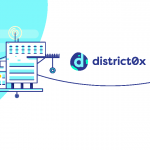SpreadCoin is a new cryptocurrency which is more decentralized than Bitcoin. It prevents centralization of hashing power in pools, which is one of the main concerns of Bitcoin security. SpreadCoin was fairly launched with no premine.
Features.
Decentralized.
In proof-of-work cryptocurrencies like Bitcoin, Crown, etc new coins are generated by the network through the process of mining. One of the purposes of mining is to protect network from double spending attacks and history rewriting. Miners generate new blocks and check contents of the blocks generated by other peers for conformation to the network rules.
However, many miners now delegate all the checking work crucial to cryptocurrency security to pools. This puts the whole network at risk in case these pools will become malicious or if their security will be compromised.
In SpreadCoin there are no pools, mining power is spread around many solo miners. SpreadCoin introduces a sophisticated pool prevention mechanism using the SpreadX11 algorithm, which is different from X11. With SpreadX11 every block header contains additional information (MinerSignature and hashWholeBlock).
With the help of this information the protocol ensures that the miner of a new block is always also the first one to know the content of the whole block and the private key to spend the Coinbase transaction. (contrary to pool mining where the pool operator is the first one to know those things)
So when a miner finds a block, he must himself sign and transmit the block to the network (like solo mining), instead of having a pool handle this for him. This effectively prevents pools by making their rules non-enforceable, since any miner in any assumed pool can always just steal the block reward instead of following the rules set up by the pool.
Service nodes.
A service node is a node which runs continuously (24/7) on a server and which provides services within the SpreadCoin network. You have to pay a collateral to be able to install a server node (in return your service node will earn a steady income). This collateral is determined by a free market price discovery. (No fix collateral. The price is allowed to fluctuate over time.)
Since the collateral isn’t set in stone, but the amount of service nodes is fixed, the price of a service node will be determined by the participants themselves. It is expected that the price will vary widely over time, which exposes it to the same market forces that hash rate and currency value are exposed to too.
The concept is largely borrowed from project DASH, formerly Darkcoin, which implemented a similar two-tier node system. Instead of calling their second independent layer of nodes Masternodes, SPR chose a name that reflects the intention of providing services on top of the SPR block chain. (Service nodes)
There are a number of decentralized applications that will run on service nodes.
Most likely those apps will include:
1) “Spread the message”_(an in-wallet encrypted messaging system, which allows you to send a message to an SPR address)
2) “Spread the Search”:(A decentralized search engine that lets the service nodes crawl and map the entire internet.)
3) etc…
Data mining.
One of the best ways to realize the full potential of the virtual currency may be by harnessing its big data. As the blockchain is essentially a ledger that every bitcoin transaction must pass through for verification by the millions of other peer-to-peer users, the insights to be collected from that ledger are potentially endless.
Organizations are beginning to perform data analysis on virtual currency activities to uncover powerful insights into trends and events surrounding currencies like bitcoin. The data within the blockchain is predicted to be worth trillions of dollars as it continues to make its way into banking, micropayments, remittances, and other financial services.
In fact, the blockchain ledger could be worth up to 20% of the total big data market by 2030, producing up to $100 billion in annual revenue. To put this into perspective, this potential revenue surpasses that of what Visa, Mastercard, and PayPal currently generate combined.
SpreadCoin proposes reinventing bitcoin mining into big data mining. Its whitepaper outlines the development of an incentive system to support a broad system of node managers at a time when bitcoin usage is on the rise and the number of nodes are declining.
Instead of attempting to find a mechanism to incentivize Bitcoin nodes directly on the Bitcoin network and therefore find ways to avoid Sybil attacks on the Bitcoin network; the SPR network nodes themselves are incentivized to host full Bitcoin nodes. SPR intends to use its second tier node system on top of Bitcoin to link the Blockchain with APIs to facilitate a new Blockchain Big Data market.
Businesses wanting to access aggregated data on smart contracts and other transactions will be able to buy information via the new second layer and have the Bitcoin miners process data mining requests. It is this approach which will create new revenue streams for the Bitcoin network.
The new overlay network will be decentralized meaning that anyone can join and anyone running a full Bitcoin node as a service and all of the Bitcoin miners, the two main components of the Bitcoin network, will be paid all of the revenues generated by a new Blockchain Big Data market.
Compact transactions.
SpreadCoin uses a more compact representation for signatures in transactions. SpreadCoin as well as Bitcoin uses ECDSA signatures. While bitcoin keeps a copy of the public key of the corresponding signature around, SpreadCoin ommits this by recovering the public key on the fly directly from the signature.
This way it is not necessary to keep the public key of every ECDSA signature in the blockchain, so this leads to *smaller transactions and hence a smaller blockchain (at the cost of a few CPU cycles more).
(*reduction in size of transaction from 139 or 107 bytes in Bitcoin to 67 bytes in SpreadCoin.)
Smooth Reward Decrease.
Unlike Bitcoin, there are no abrupt reward halvings in SpreadCoin. Block reward is smoothly decreasing over time.
Blockchain Parameters
- Algorithm: SpreadX11.
- Block generation: 1 minute.
- Difficulty retargets: every block based on last 360 blocks.
- Reward starts at approx. 6.66 coins per block.
- Block reward is smoothly halved every 4 years.
- Total supply: 20 mln coins.
- No year 2106 problem.
SpreadCoin (SPR) OVERVIEW.
Current coin Value: $2.82 (2.85%)
Market Cap: $24,434,845.
24hr volume: $121,461.
Circulating Supply: 8,668,066 SPR.
Total Supply: 20,000,000 SPR.
(As of 31/8/2017).
Exchanges.
Wallets.
Spreadwallet.
The spreadwallet is a multicoin multiwallet that can operate in SPV and Full node mode. It has a few very nice features, including a built-in vanity address generator app, which allows anyone to create personalized payment addresses. The easy to use wallet lets you search through trillions of payment addresses allowing you to find one or multiple vanity addresses, which are then stored safely along with the private keys on your own computer - and nowhere else.
Searching using the vanity gen is probabilistic, so the amount of time required to find your chosen address patterns depends on how complex the pattern is, the speed of your computer, and a little bit of luck.
You can use the vanity gen for a bit of fun, to make your address standout from the crowd or to create a link to a brand, business or other organization. You can even search for addresses that others might be willing to buy from you.
Other features include:
- Decentralized UTXO block explorer that works with the nodes you host locally (on your main computer or spread over your local network).
- Multihost capabilities that allow you to run multiple nodes in your local network, remote controlling them with your spreadwallet.
- Easy setup and control through SSH of all the raspberry pis in your local network.
- Multiwallet support for many coins, immediate use of all those coins in SPV mode.
- Support for many different styles of wallets (deterministic, non-deterministic, TREZOR and paperwallets).
- Update of the SpreadCoin daemon to newest bitcoin core codebase.
Wallet downloads:
Mining.
You can mine directly from the wallet, just go to the mining tab and press ‘Start mining’, you will start mine to your wallet. Thread about mining SpreadCoin: https://bitcointalk.org/index.php?topic=869289.
Also you can mine to a specific address (this is useful if you are mining on several computers). To do so:
1. Use existing or better generate a new address.
2. Open debug console (Tools -> Debug Console) and enter:
Quote.
dumpprivkey SYourSpreadCoinAddress.
- You will get your private key. Then open spreadcoin.conf or create it if it doesn’t exist (D:\Users\<username>\AppData\Roaming\SpreadCoin\spreadcoin.conf on Windows) and add the following line:
Quote.
miningprivkey=YourPrivateKey.
- Restart your wallet if it was running.
In the Mining tab you will now see notification that all mined coins will go to this address.
GPU Miners.
If you want to mine SpreadCoin you should use a GPU miner:
IN CLOSING.
It may never be able to buy you a cup of coffee, but as an altcoin that could one day be considered necessary for bitcoin to thrive, it’s currency has the potential to be worth a lot more than it is today.
The developers also have plans to become a Bitcoin Sidechain, “once the technology to operate a second tier decentralized node network is established and the side chain technology is implemented.”
However, their current focus in ensuring that Spreadcoin becomes an incentive to create bitcoin full nodes, by delivering an income from data mining, ultimately leading to a far more robust and popular Bitcoin.
[currencyprice currency1=”SPR” currency2=”usd,eur,btc”]
[currencygraph currency1=”SPR” currency2=”usd”]




















